Blue Lasers in Agriculture, Biotechnology and Biosciences
Plant Dissection
Research into biological matter often requires the acquisition of uncontaminated samples, a task historically hindered by laborious and time-consuming mechanical separation techniques. To overcome these challenges and advance the precision of plant microdissection, scientists are turning to lasers as a cutting-edge solution. In particular, blue lasers are emerging as a promising tool in plant sciences, offering a non-contact, high-precision method for obtaining high-quality and uncontaminated plant samples.
Mechanical separation techniques have long been the go-to for dissecting various parts of plants, but their drawbacks are evident. These methods are not only labor-intensive but also prone to contamination, as the processing tools need constant sterilization to prevent the transfer of particles between different parts of the sample. As a solution to these challenges, lasers have gained prominence in fields such as surgery, dentistry, and plant sciences for their non-contact cutting capabilities.
Laser dissection, as a non-contact specimen cutting method, addresses the shortcomings of traditional plant dissection. Recent advancements in computer vision have further enhanced the technique, making it a rapid and high-precision process that ensures the acquisition of high-quality and uncontaminated samples. While most commercially available laser-based dissection devices use UV lasers, which are excellent for animal tissue, it is known that UV light can be harmful to plant matter.
This is where blue lasers, with their wavelengths typically ranging between 400 and 495 nm, present a viable alternative for plant dissection. The primary pigment in most plants, chlorophyll, absorbs predominantly violet and blue light. Specifically, chlorophyll-a absorbs strongly around the 430 nm wavelength, and chlorophyll-b peaks at around 470 nm. This absorption profile makes blue lasers highly efficient for plant dissection, ensuring that when laser parameters such as optical power, speed, and spot size are properly set, the cut is of exceptional quality.
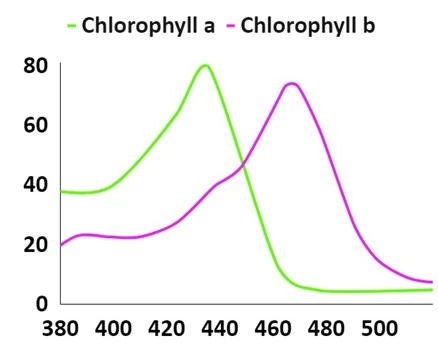
The advantages of using blue lasers in plant dissection extend beyond their spectral compatibility with chlorophyll. When integrated with XY positioning systems or galvanometric scan heads, blue lasers enable high-speed, low-effort, and repeatable dissection processes. This not only enhances the accuracy of sample collection but also streamlines the overall research workflow, allowing scientists to delve deeper into the intricacies of plant biology.
As technology continues to revolutionize the field of biology, the marriage of blue lasers and advanced dissection techniques stands out as a beacon of progress in plant sciences. By offering a non-contact, high-precision method that minimizes contamination, blue lasers are proving to be invaluable tools in unlocking the secrets hidden within the microscopic realms of plant tissues. The future of plant dissection is indeed illuminated by the blue glow of laser precision.
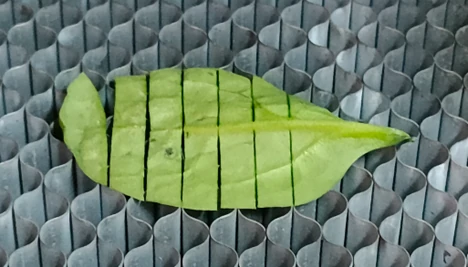
Vertical Farming Technology
In recent years, the increasing need for sustainable food production has been driving the development of new solutions, such as vertical farming technology (indoor horticulture). Particularly widespread in regions facing challenges such as water scarcity and insufficient sunlight for outdoor cultivation, indoor farming is redefining the landscape of agriculture. However, as with any technological advancement, indoor farming is not without its challenges, and one significant hurdle lies in the high energy demands associated with artificial lighting systems.
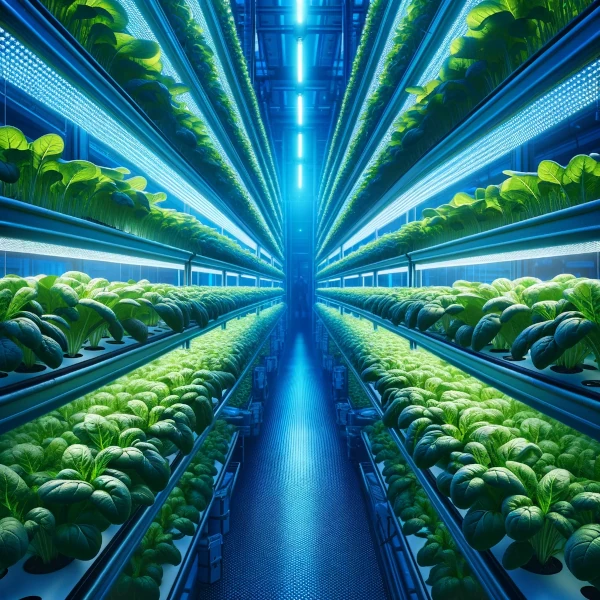
Traditional vertical farms have historically relied on fluorescent lamps, but in recent times, there has been a notable shift towards the use of light-emitting diodes (LEDs) due to their higher efficiency. Numerous studies have explored the effects of LED lighting on plant development, revealing that a combination of red and blue LEDs can effectively replace broad-spectrum lamps without compromising plant growth. But, as great as LEDs are, there is still a pressing need to further reduce the energy consumption.
The future of lighting for indoor farms may find its solution in semiconductor laser diodes (LDs). These diodes possess a high electrical-to-optical conversion ratio, setting them apart from LEDs, especially at high currents. Unlike LEDs, which exhibit an “efficiency droop” at high currents, LDs maintain almost the same power conversion efficiency. This characteristic makes LDs an ideal candidate for addressing the energy efficiency concerns associated with indoor horticulture.
One distinctive advantage of semiconductor laser diodes lies in the narrow beam angle of the light they emit. This property allows for the precise shaping of beams, enabling the direction of light exactly where it is needed. This targeted illumination minimizes wasted photons in spaces between plants, further enhancing the overall efficiency of laser-based lighting systems in indoor farms.
The high absorption of blue light by chlorophyll in plants makes blue lasers essential for optimizing photosynthesis. Research indicates that the strategic use of blue lasers in different growth stages of plants can positively impact their health, leading to taller plants with broader leaves and increased flower production. These advancements result in abundant and healthier crop yields, marking a significant stride in the evolution of indoor farming technologies.
In the world of indoor farming, the integration of blue lasers and semiconductor diodes represents a notable advancement towards energy-efficient and precisely targeted cultivation practices. As we prioritize sustainability, the efficacy of laser diodes—especially in tandem with blue lasers—holds significant promise for optimizing indoor farming operations. Beyond addressing energy challenges, this symbiosis drives us towards a future where agricultural practices are not only more resource-conscious but also demonstrably more productive.
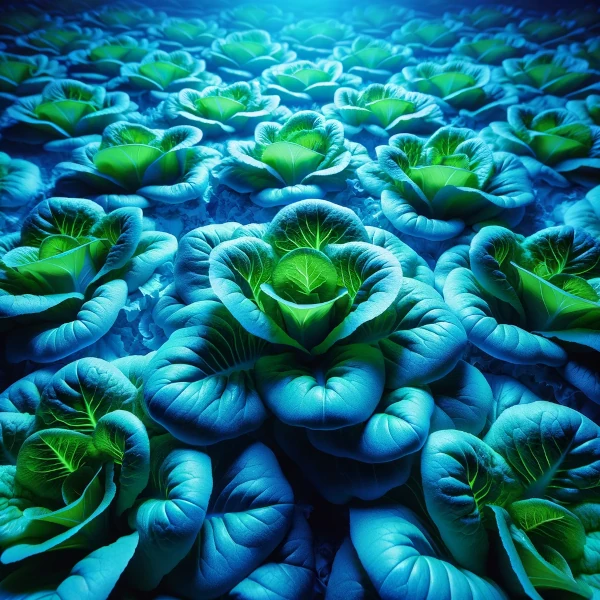
Pest Control in Agriculture
One of the most frustrating topics in agriculture is the efficient and safe insect control, with current mechanical and chemical methods often proving invasive and not directed. The consequence of these methods is the unintended eradication of insects, including those beneficial to plants through activities such as pollination. What if there was a way to target pests directly without harming plants, or even potentially aiding them? The answer might lie in shedding light on the situation—literally.
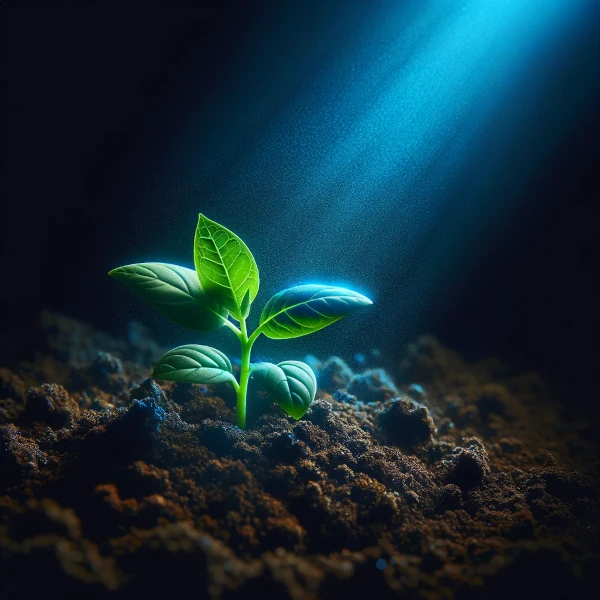
Light has long been recognized for its influence on insect behavior, for example by the use of UV lamps that attract and trap insects. However, what if light itself could be employed to eliminate harmful insects? In recent years, a team of scientists from Japan has studied the toxicity of visible light towards them [1]. Although this research is still in its early stages, the currently available data suggests that blue light exhibits lethal effects on common pest insects, such as mosquitoes, flour beetles, and fruit flies.
The effectiveness of blue light in insect mortality is intricately linked to the wavelength, a factor influenced by the insect’s developmental stage and species [2]. Blue laser diodes hold a distinct advantage in this regard, as their wavelengths align with the lethal range for these common pests. By employing a meticulous wavelength selection process, it becomes possible to optimize the lethal impact. Additionally, the beauty of blue light lies in its high absorption rate by most plants, raising the possibility of simultaneously eliminating pests and promoting plant growth.
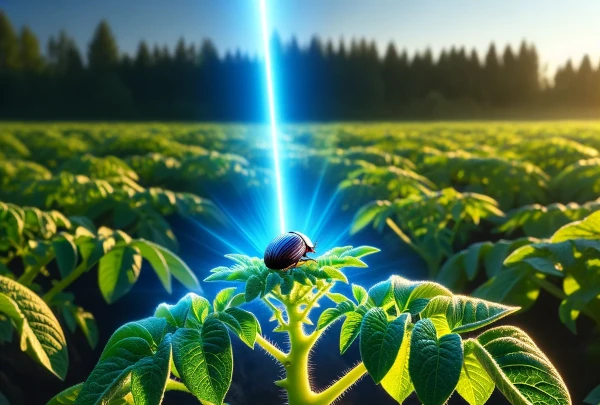
This targeted approach using blue lasers has the potential to revolutionize pest control in agriculture by minimizing environmental impact. By specifically targeting harmful insects while sparing beneficial ones, this method offers a precise and eco-friendly alternative to traditional pesticides. Blue lasers, with their non-chemical and targeted nature, contribute to a sustainable solution for agriculture, horticulture, and pest control industries. This innovation aligns seamlessly with the growing emphasis on eco-conscious practices in modern agricultural systems, paving the way for a more harmonious coexistence between crops and the insects that surround them.
[1] DOI: 10.1038/srep07383
[2] DOI: 10.1371/journal.pone.0199266
Blue diode laser advantages:
- Wavelength highly absorbed by plants – no need for exceedingly high optical powers
- Non-contact method means no physical damage
- Environmentally friendly
- Compact size and low weight
- Cost-effective, requires minimal maintenance
| Model | GLE-S-40-B | GLE-S-80-B | GLE-S-160-B |
|---|---|---|---|
| Center Wavelength | 450 nm | ||
| Minimum Optical Power | 40 W | 80 W | 160 W |
| Working Distance | 180 mm or 350 mm or 650 mm | ||
| Working Area | 100 × 100 mm or 200 × 200 mm or 300 × 300 mm | ||
| Minimum Spot Size | 2500 µm | ||
| Operation Speed | up to 2000 mm/s | ||
| Laser Electro-to-Optical Efficiency | 27% | 24% | 30% |
| Maximum Power Consumption | 200 W | 300 W | 600 W |
* Values provided for 350 mm working distance. † For angles ±10°.
